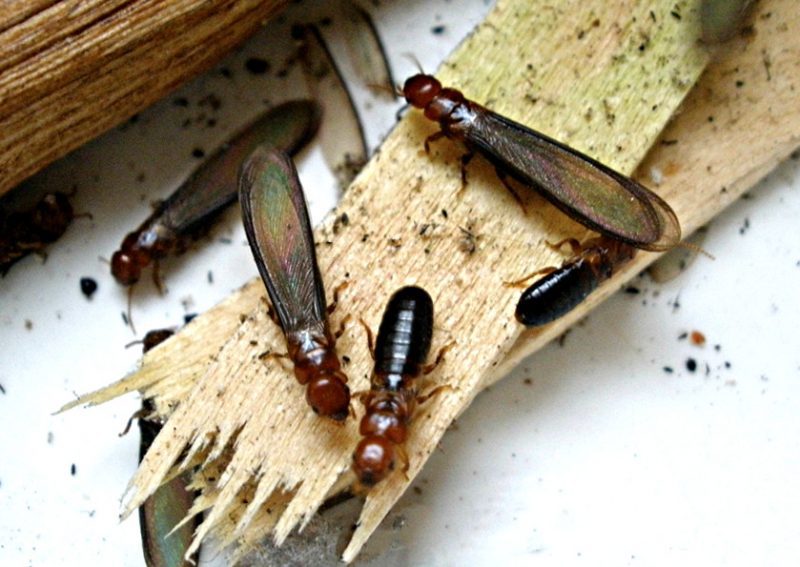Pests On The Move In The East Of Adelaide
September 27, 2022
September 1, 2021
Table of Contents
Termites have a reputation for causing a lot of damage to homes. With a reputation to uphold, termite damage is one of the leading causes of home damage in Australia today. Termites can cause damage by eating through wood, which can lead to structural damage and significant repair bills for homeowners.
Termites are destructive pests that can cause considerable damage to homes and other structures. Termite identification is difficult because they can be found in various locations and unidentified termite species often look similar. You should also watch out for swarmers coming out from around your house because this is a distinct sign that there may be a termite infestation nearby.
Drywood termites are termites that live in grass and other organic matter. The termites make tunnels in the wood that contain food. Drywood termites usually feed on wood that is in the form of cellulose. Drywood termites eat different types of wood, with softwoods (like maple and oak) being favored by drywood termites.
Termites will make their nests in the soil and leave the tunnels to go get food before returning to the rooms or galleries built adjoining the tunnels. Drywood termites favor hardwoods (like cypress). Termites make their nests in the wood and navigate the tunnels to get to food sources or rooms known as galleries on the other end of the wood tunnels. The drywood termite eats roots. So a hardwood tree planted near a softwood tree is likely to be eaten.

When you think you may have a termite infestation, you need to act fast to get rid of them. There may be nothing to be concerned with; however, it could be time to call in a trusted professional if you see any of these signs.
Termites in walls can be hard to detect and can happen to any kind of building, but there are some tell-tale signs on how to spot termites to make things a bit easier. So, how do you check for termites in walls and other areas of your home? Firstly, termite droppings near your home are one indication that you might have termites. So, when looking for termites signs, you should check out these common indicators of a termite infestation.
Termites are a common household pest. They can be found in most areas throughout Australia, with the most common termite being the subterranean termite. The most prevalent sign of a termite invasion is small piles of sawdust or mud called frass.
Close examination may reveal either small holes or larger ones in drywall, wood beams, furniture, and other surfaces where termites have been eating away at the wood. Termites are terrible, and they destroy your home, which can cause you to have to move out. They can also be dangerous to your home because they can start fires caused by chewing on wires that are unprotected.
The most common symptoms of a wood termite infestation include:
Most insects inside trees eat the cambium layer of the actively dividing cells between the wood (xylem) and the bast (tissues). While most feed on bark, others, such as leaf-cutter termites, bore into the wood. The symptoms are very similar. You will likely see evidence of a Termite infestation in your trees. If you have any of the common signs below:
Termites are a hassle to get rid of. They are built to last. So, the longer they remain, the harder it is to eradicate. All you can do is prevent the infestation from becoming more serious.
Termites are stubborn pests. They can infest your home for several years at a time. Even though you might have noticed small piles of frass, it might take a professional termite exterminator a week or two to detect the infestation and get rid of them. Fortunately, you can get rid of termites with some low-cost methods.
However, there is no approved cure for termites and no method of treatment that can guarantee they won’t come back, but there are many practical measures you can take to stop the spread of termites in your home.
As a homeowner, you are responsible for preventing the spread, so what do you do if you have termites? You can make a huge difference by doing a little bit of each of the suggestions listed above.
There are a few treatments that you can use at home, but you need to work with a professional, in most cases, to prevent the infestation by termites from spreading any further. If you do find out that your home has termites, your first step should be to get a complete termite inspection.
September 27, 2022
Pest are on the move in the Adelaide Eastern suburbs, here is some info on pest in Norwood, Magill, Fullarton…
Read MoreAugust 30, 2022
Pigeons nesting under solar panels? Pigeons nesting under solar panels can wreak havoc, pigeons and other birds seek shelter between…
Read MoreMarch 18, 2022
Termites are a nightmare for any homeowner, often causing thousands of dollars in damage each year. As adults, the signs…
Read MoreWe understand that dealing with pests can be stressful. That's why we offer a convenient and speedy service. You can book our services online or get expert advice and bookings at 139 007. We offer appointments from 6am - 6pm and promise a 15-minute call back if you enquire online. We also provide digital service reports with photo evidence and offer credit card payment options in all service vehicles.